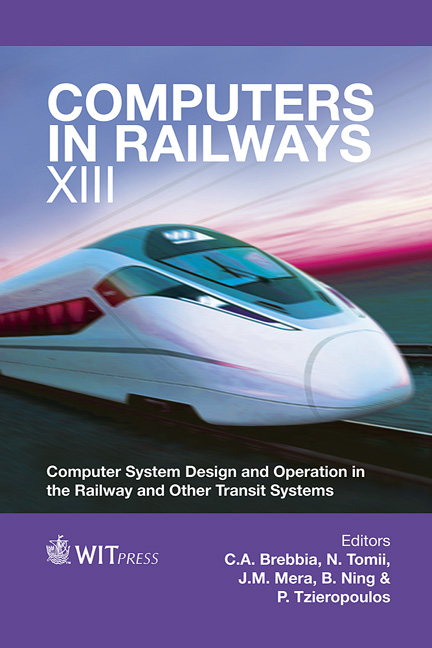Data Aggregation For Detailed Analysis Of Train Delays
Price
Free (open access)
Transaction
Volume
127
Pages
12
Page Range
239 - 250
Published
2012
Size
3,220 kb
Paper DOI
10.2495/CR120211
Copyright
WIT Press
Author(s)
T. Richter
Abstract
The classical approach to analysis of train delays is either based on analysis of delays over a certain threshold along with their cause or of all delays at arrivals to and departures from stations, irrespective of cause. On Danish railway lines with dense traffic, these classical approaches have not been able to yield sufficient information on the dynamics of delays to allow for in depth understanding of the behaviour of delays (Section 1). On large parts of the Danish railway network, data is available describing the occupation of block sections and important track circuits (Section 2). Based on this data a method is developed to construct an enriched train run history on track circuit level. This train run history include information on delay, change in delay, headway between trains as well as the most likely signal aspect received at each block section and which train that caused it (Section 3). This enriched train run history allows for analysis of network performance on track circuit level on lines between junctions. Simple examples of such analysis are then demonstrated (Section 4). Such analysis can help identify i.e. infrastructure bottlenecks, timetabling inefficiencies and initial trains that cause queuing. This again makes it possible to focus the punctuality improving efforts to achieve a higher punctuality (Section 5). Keywords: train run history, delays, queuing, resolution of data, single line.
Keywords
train run history, delays, queuing, resolution of data, single line





